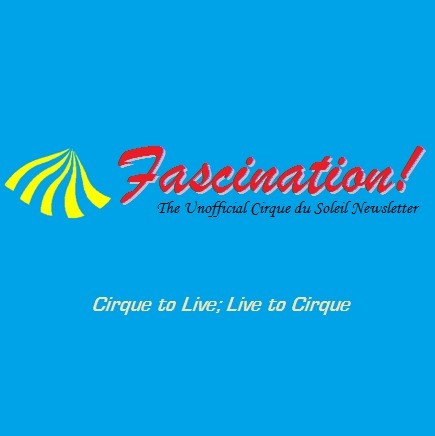Copy Link
Add to Bookmark
Report
AIList Digest Volume 4 Issue 171

AIList Digest Tuesday, 22 Jul 1986 Volume 4 : Issue 171
Today's Topics:
Queries - Geometric Placement & Oceanic or Weather References &
Common Lisp and Prolog on VM/CMS & KB System Verification and Validation,
Philosophy - Conservation Laws for Thought & Interactive Systems,
AI Tools - Catalogue of AI Tools
----------------------------------------------------------------------
Date: 19 Jul 1986 14:36-EDT
From: Carlos.Bhola@spice.cs.cmu.edu
Subject: Query - Geometric Placement
Query: Does anyone know about any expert system (developed
or under development) that relates to the placement
of geometric objects in a plane? Examples of the
problem would be pagination, VLSI layout, etc.
-- Carlos.
------------------------------
Date: 21 Jul 86 14:30:00 EDT
From: "CUGINI, JOHN" <cugini@nbs-vms.ARPA>
Reply-to: "CUGINI, JOHN" <cugini@nbs-vms.ARPA>
Subject: request for oceanic or weather references
Does anyone know of AI or expert systems work being done whose
application domain is oceanography or atmospheric science?
I'd appreciate any pointers - please send directly to me.
John Cugini <Cugini@NBS-VMS>
Institute for Computer Sciences and Technology
National Bureau of Standards
(301) 921-2431
[The 1985 IEEE conference on Expert Systems in Government had
a session on Environment and Weather. There was also a short
article on prospects of AI in weather forecasting in Aviation
Week & Space Technology, April 7, 1986, pp. 143-146. RuleMaster
has been used in some experimental atmospheric domains; contact
Radian Corp. There have also been some efforts at combining the
two fields -- expert systems to route ships; contact Dr. James
Mays of Micronautics, Inc., 70 Zoe Street, Suite 200, San Francisco,
CA 94107, (415) 896-6764. -- KIL]
------------------------------
Date: Sun, 20 Jul 86 18:30:10 edt
From: dsn@vorpal.cs.umd.edu (Dana Nau)
Subject: Common Lisp and Prolog on VM/CMS
We are looking for implementations of Common Lisp and Prolog that run under
VM/CMS, to be used for undergraduate/graduate instruction. I'd appreciate
any information people might have about the following:
(1) Does anyone know of a decent Common Lisp that runs under VM/CMS?
(IBM Lisp isn't suitable for our purposes, since it's rather different
from Common Lisp).
(2) Has anyone had experience using IBM Prolog? How natural would it be to
use for one accustomed to C-Prolog (or any other Prolog that uses the
syntax described in Clocksin and Mellish)?
(3) Does anyone know of a Prolog that runs under VM/CMS that's closer to
C-Prolog? Or, for that matter, does anyone know whether C-Prolog can
be made to run under VM/CMS?
------------------------------
Date: 22 Jul 86 12:50 EST
From: AIMAGIC%SCOM08.decnet@ge-crd.arpa
Subject: KB System Verification and Validation
I am an employee with GE Space Systems and am in the process of doing
work on an IR&D in the area of AI development methodologies or the lack
there of. As part of this effort, I am trying to determine what already
exists, what is available for purchase, and what can be had for the asking.
I have be doing extensive research in this area but have found little
information specifically directed at Knowledge-Based System Verification and
Validation. As a result, I have had to come up with my own concepts of what
can be done. For example, I have determined that a Knowledge-Based Software
Development Environment (KBSDE) consisting of a number of complementary
tools is essential. The tools themselves should support all phases of the
development life cycle. For KBS systems the question becomes, What is its
Life Cycle, how closly does KBS system development parallel that of "normal"
procedural/algoritmetic software? How do we account for rapid prototyping
while at the same time exercising the control necessary to create a reliable
software system?
I have made some progress in answering these questions and would be
willing to share my discoveries with the general community, if I could in
turn find out what is already out there and thus need not be rediscovered.
If it is at all possible, could this request be posted and responses sent
to me? If this could be done, I would gladly summarise my results for
general reading after sufficient responces were received.
Thanks:
Phil Rossomando
GE Space Systems Devision
King of Prussia, PA.
AIMAGIC%SCOM08.decnet@ge-crd.arpa
------------------------------
Date: Mon, 21 Jul 86 13:05:55 PDT
From: ANDREWS%EAR@ames-io.ARPA
Subject: Conservation Laws for Thought??? (AIList Digest V4 #170)
In his July 16 missive on Life, Intelligence, and Creativity definitions,
Larry makes a statement (highlighted below in upper case) which is quite
provocative to a mechanical engineer like myself.
> "Creativity" is a particular kind of intelligence. It can be recognized by its
> products: ideas, actions, or objects that did not exist before. ...
> Obviously, these new things don't appear from nowhere. THERE ARE CONSERVATION
> LAWS IN THOUGHT AS WELL AS IN PHYSICS (THOUGH VERY DIFFERENT ONES).
Have I missed something somewhere? If there are "thought conservation laws",
could someone please provide me with some references? And if nothing has been
documented, could someone please fill me in? I understand the concept of
conservation of mass and energy (what goes in - what comes out = increase in
amount stored), and the "bookkeeping" associated with entropy production,
transfer, and storage, but I have never heard of an application of those ideas
to human thought. I'm undecided about whether to be excited or depressed.
Help!
Alison Andrews
NASA Ames Research Center
andrews%ear@ames-io.arpa
------------------------------
Date: Monday, 21 Jul 1986 11:42:07-PDT
From: cherubini%cookie.DEC@decwrl.DEC.COM (RALPH CHERUBINI
CX01-2/N22)
Subject: Interactive Systems
Response to 14 Jul "Architectures for interactive systems?"
For a very provocative couple of hours relating to modes of interaction,
user models, contexts...I suggest people get a copy of the videotape of
the movie "Being There". I have found it very suggestive, based as it
is on a central character who has a very limited repertoire of
responses. I think there is a great deal to be learned from the
models of interactions which are both explicit and implicit in the
film. I'd be interested to hear reactions.
Ralph Cherubini
Digital Equipment Corporation
[For those who haven't seen it, Being There stars Peter Sellers as a
retarded man who is forced into the world by the death of the wealthy
man who had sheltered him. He enters the world full-grown, with no
traceable past, dressed in expensive clothes, and interested in little
except gardening and watching television. His great talent is that
he listens very intently, with no hidden agenda of things he'd like to
say or places he'd rather be -- hence the title. People mistake his
laconic replies, particularly his references to gardening, as deep
philosophical thought -- as with the Eliza/Doctor program. He finds
shelter with a millionaire, a political "king-maker", who introduces
Sellers to all the right people and fosters this image of precious
eccentricity and deep insight. The few who realize Seller's true
nature are either unable or unwilling to break the illusion. -- KIL]
------------------------------
Date: Fri, 18 Jul 86 16:57:30 -0100
From: Alan Bundy <bundy%aiva.edinburgh.ac.uk@Cs.Ucl.AC.UK>
Subject: Catalogue of AI Tools
THE CATALOGUE OF ARTIFICIAL INTELLIGENCE TOOLS
Alan Bundy
The Catalogue of Artificial Intelligence Tools is a kind of
mail order catalogue of AI techniques and portable software. Its
purpose is to promote interaction between members of the AI community.
It does this by announcing the existence of AI tools, and acting as a
pointer into the literature. Thus the AI community will have access
to a common, extensional definition of the field, which will: promote
a common terminology, discourage the reinvention of wheels, and act as
a clearing house for ideas and software.
The catalogue is a reference work providing a quick guide to
the AI tools available for different jobs. It is not intended to be a
textbook like the Artificial Intelligence Handbook. It,
intentionally, only provides a brief description of each tool, with no
extended discussion of the historical origin of the tool or how it has
been used in particular AI programs. The focus is on techniques
abstracted from their historical origins.
The original version of the catalogue, was hastily built in
1983 as part of the UK SERC-DoI, IKBS, Architecture Study. It has now
been adopted by the UK Alvey Programme and is both kept as an on-line
document undergoing constant revision and refinement and published as
a paperback by Springer Verlag. Springer Verlag have agreed to reprint
the Catalogue at frequent intervals in order to keep it up to date.
The on-line and paperback versions of the catalogue meet
different needs and differ in the entries they contain. In
particular, the on-line version was designed to promote UK interaction
and contains all the entries which we received that meet the criteria
defined below. Details of how to access the on-line version are
available from John Smith of the Rutherford-Appleton Laboratory,
Chilton, Didcot, Oxon OX11 OQX. The paperback version was designed to
serve as a reference book for the international community, and does
not contain entries which are only of interest in a UK context.
By `AI techniques' we mean algorithms, data (knowledge)
formalisms, architectures, and methodological techniques, which can be
described in a precise, clean way. The catalogue entries are intended
to be non-technical and brief, but with a literature reference. The
reference might not be the `classic' one. It will often be to a
textbook or survey article. The border between AI and non-AI
techniques is fuzzy. Since the catalogue is to promote interaction
some techniques are included because they are vital parts of many AI
programs, even though they did not originate in AI.
By `portable AI software' we mean programming languages,
shells, packages, toolkits etc, which are available for use by AI
researchers outside the group of the implementor, including both
commercial and non-commercial products. To obtain a copy of software,
do NOT write to us or the contributor of the entry; look at the
`Availability' field or write to the implementor. We hope that (s)he
will supply sufficient documentation for the system to be used by an
outsider, but do not expect non-commercial products to be as
professionally polished as commercial ones.
We have not included in the catalogue separate entries for
each slight variation of a technique, programming language, etc.
Neither have we always included details of how to obtain the software,
nor descriptions of AI programs tied to a particular application, nor
of descriptions of work in progress. The catalogue is not intended to
be a dictionary of AI terminology nor to include definitions of AI
problems.
Entries are short (abstract length) descriptions of a
technique or piece of software. They include a title, list of
aliases, contributor's name, paragraph of description, information on
availability and references. The contributor's name is that of the
original contributor of the entry. Only occasionally is the
contributor of the entry also the implementor of the software or the
inventor of the technique. The `Availability' field or the reference
are a better guide to the identity of the implementor or inventor.
Some entries have been subsequently modified by the referees and/or
editorial team, and these modifications have not always been checked
with the original contributor, so (s)he should not always be held
morally responsible, and should never be held legally responsible.
If you would like to submit an entry for the catalogue then
please fill in the attached form and send it to:
Alan Bundy,
Department of Artificial Intelligence,
University of Edinburgh, Tel: 44-31-225-7774 ext 242
80 South Bridge,
Edinburgh, EH1 1HN, JANet: Bundy@UK.Ac.Edinburgh
Scotland. ARPAnet: Bundy@Rutgers.Arpa
CATALOGUE OF ARTIFICIAL INTELLIGENCE TOOLS:
FORMAT FOR ENTRIES
Title:
Alias:
Abstract: <Paragraph length description of tool or technique>
Contributor: <Your name>
References: <Aim for the most helpful rather than the `classic' one>
Availability: <e.g. commercially available with documentation and support,
available as a research vehicle only with limited documentation>
Environment: <necessary supporting software/hardware>
From: <contact address for distribution, incl. telephone number and
electronic mail address if appropriate>
------------------------------
End of AIList Digest
********************





















